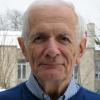About 45 years have passed since the great diaspora of Catholic priests out of active ministry and into lay life. The departure rates stayed amazingly high for a time then subsided, but continue to this day.
Now these men, in their 30s and 40s when they left, have aged into their 70s and 80s, and many are reflecting on their journey. Chicago Cardinal Francis George recently expressed regret that priests had left their God-given calling and suggested that most had at least the good sense to just "disappear." That perception may have had some validity in the 19th century and the first half of the 20th when the "fallen" clerics were regarded with either scorn or pity. Often commented on in the seminaries of those days were books like Shepherds in the Mist, which recounted the sad, frustrated, guilt-ridden lives of these betrayers of their vocation.
But few resigned priests have just disappeared. On the basis of casual conversation and media reports, it's clear great numbers have gone on to embrace full, valuable lives -- as husbands, fathers, teachers, doctors, lawyers, psychologists, business professionals, leaders in nonprofit and peace and justice organizations, writers, even clergy in other denominations. The late Martin Hegarty, whose contributions were featured recently in NCR, was one who gave fully of himself for more than 40 years in facilitating priests' transition to lay life. As these aging veterans look back over their days, we are beginning to see a stream of books about their very visible presence in and out of priestly ministry.
One of the more recent is From Imperial Church to Beloved Community by John E. (Jay) Carrigan, who attended major seminary in the '50s, was ordained in '59 and left the formal priesthood in '70. His book opens up a lifetime of searching, studying, reaching out to those in need and seeking to find new ways to make the Kingdom of God a reality in this world. In the interest of full disclosure, I want to note that Jay and I were classmates for several years at the seminary in Mundelein, Ill., and we've had on many occasions rummaged over the old days. At his request, I wrote the preface for the book.
In this combination memoir and autobiography, Jay lays out his achievements, failures and hopes. Nothing is hidden. He is straightforward about a romantic relationship he had before entering the seminary and his long struggle over many years to come to terms with it. He discusses his quest to find fulfillment as priest and pastor, his reasons for leaving, his varied life as husband, father, counselor, friend, part-time minister and lifetime student. You can hardly read three consecutive pages in this memoir without being struck with a potent quote from the mentors who continue to challenge him -- people like Richard Rohr, Pierre Teilhard de Chardin, John Dominic Crossan, Donald Cozzens, G.K. Chesterton and his all-time favorite, David Korten, economist, author, political activist and critic of globalization.
Like many of the ordained, both in and out of formal priesthood, Jay Carrigan is deeply disturbed about the chasm between the Gospel of Jesus Christ and the institutional Catholic church. He quotes Korten, who asked in his book The Great Turning how the message of Jesus who "chose a life of poverty, taught that the poor enjoy God's special blessing, urged compassion for all and preached a gospel of peace and justice " could have become "the supposed guiding light and inspiration for a church that perpetuates the values of empire."
Partly because of that troubling contrast, Jay has spent a lot of time seeking out and working with people who, he believes, have actually tried real Christianity and are succeeding in living it. He celebrates some of these in his memoir, like the lay activist who spearheaded a parish drive to supply water purification systems to 800 Haitian families, the minister from Nigeria who refuses to pay war taxes and the union worker who supported an unjustly fired employee and has gone on to battle for justice and compensation as a high union official. He also celebrates a veteran waitress who shows unusual concern for customers, and, when questioned by Jay, said simply she treats others "like I want to be treated." Their quiet witness gives him hope about the future of the Gospel message in this world.
Readers of the book will notice that many of the author's stories and anecdotes occur during breakfasts and lunches in various restaurants. There, it seems, is where he is most comfortable, sharing views, presenting his convictions and, above all, listening attentively, patiently to what the other is saying. This is a rare charism, one desperately needed in our overstimulated, easily distracted world. No, Jay Carrigan did not remain in a career of professional ministry. But he has surely not disappeared either. He is one of that legion of former priests who have used their opportunities to make grace and faith come alive.




